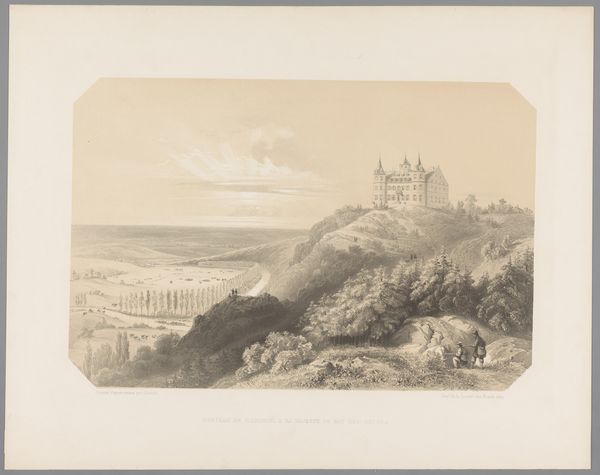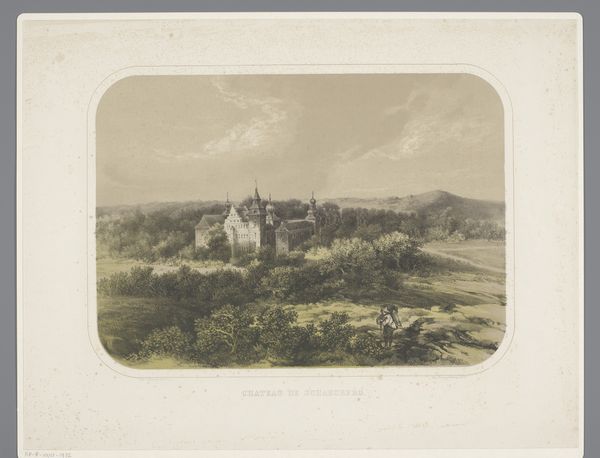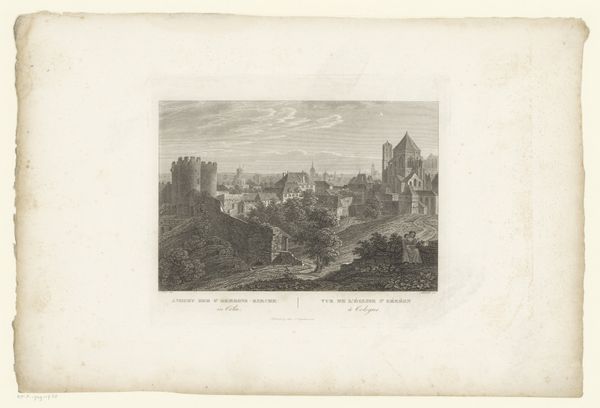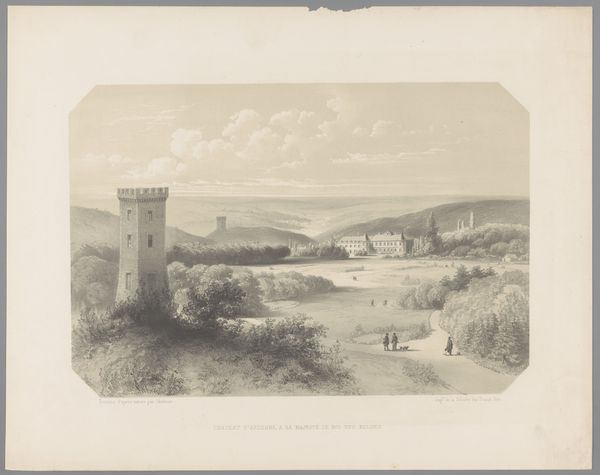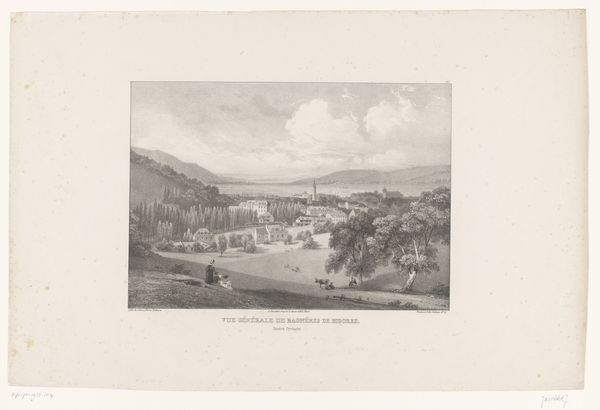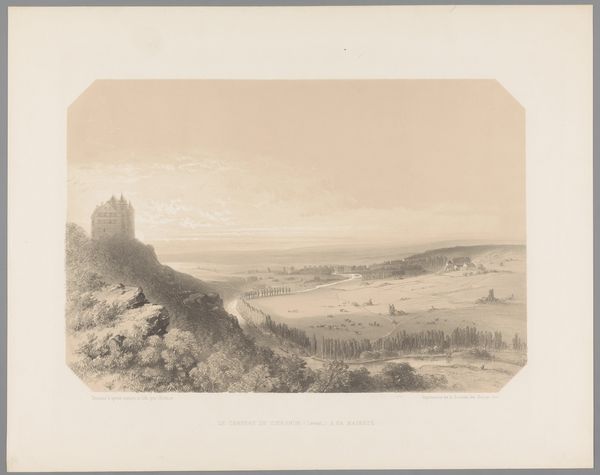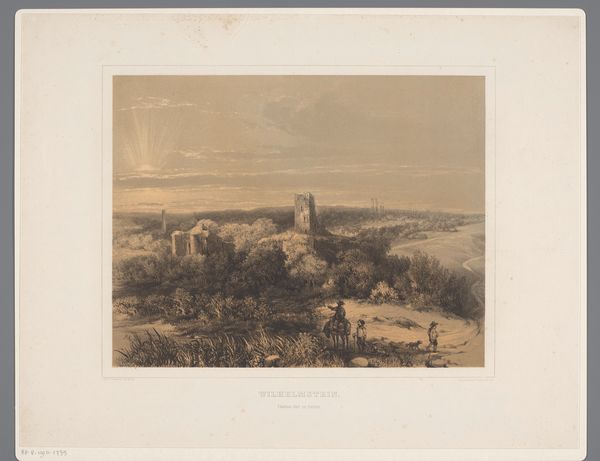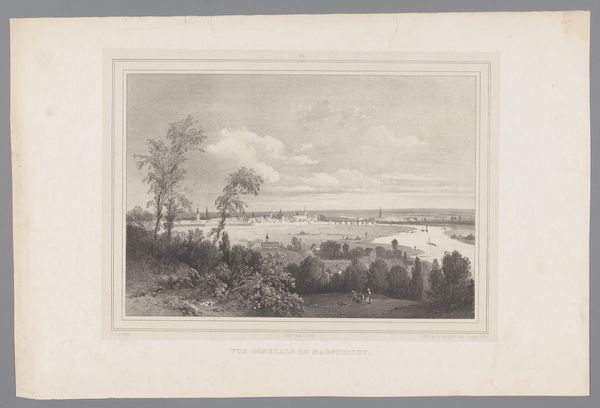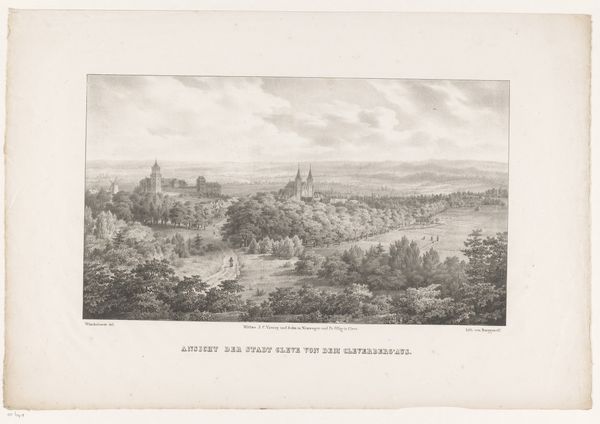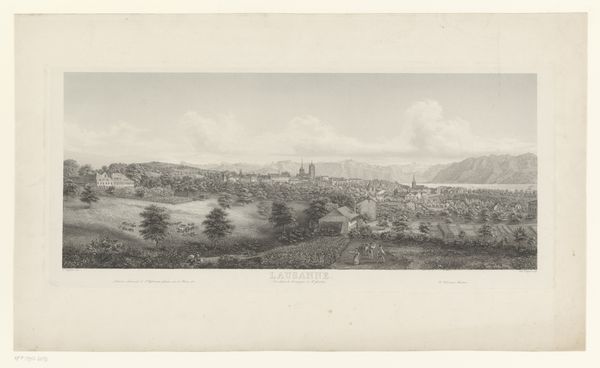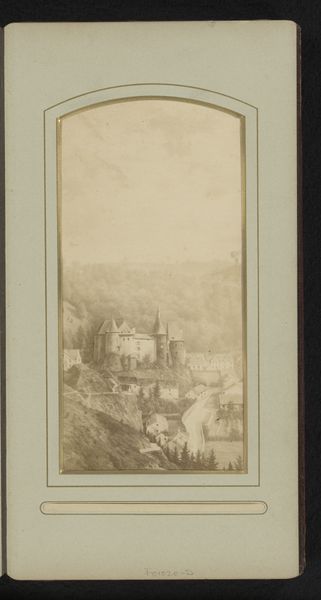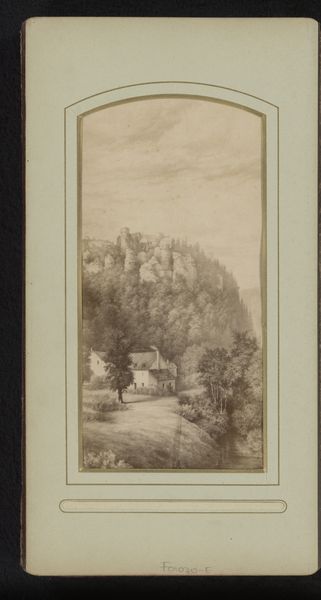
Dimensions: height 426 mm, width 548 mm
Copyright: Rijks Museum: Open Domain
This lithograph, "Kasteel nabij abdij Rolduc," was created by Alexander Schaepkens, employing a printmaking process that democratized image production during the 19th century. Lithography, unlike traditional engraving, relies on the chemical repulsion between grease and water. The artist draws on a stone or metal plate with a greasy crayon, then treats the surface so that ink adheres only to the drawn areas. This allows for relatively quick replication, contributing to the rise of mass media. Schaepkens' choice of lithography speaks to the changing landscape of art production. It’s not the unique, handcrafted quality prized by earlier generations, but a reproducible image, accessible to a wider audience. The very process reflects the era's increasing industrialization and the shift towards mass consumption, bringing picturesque views like this to a broader public.
Comments
No comments
Be the first to comment and join the conversation on the ultimate creative platform.

